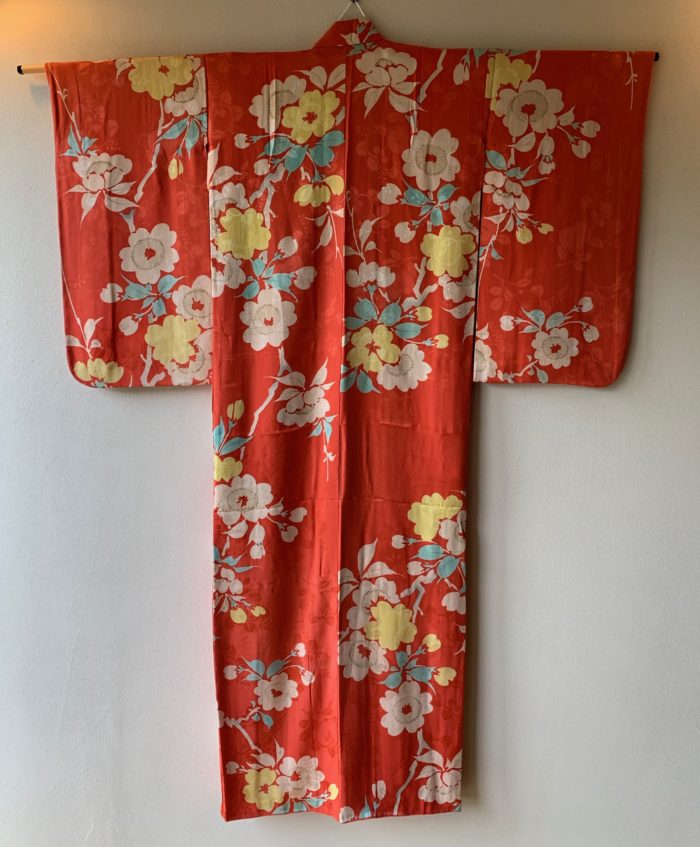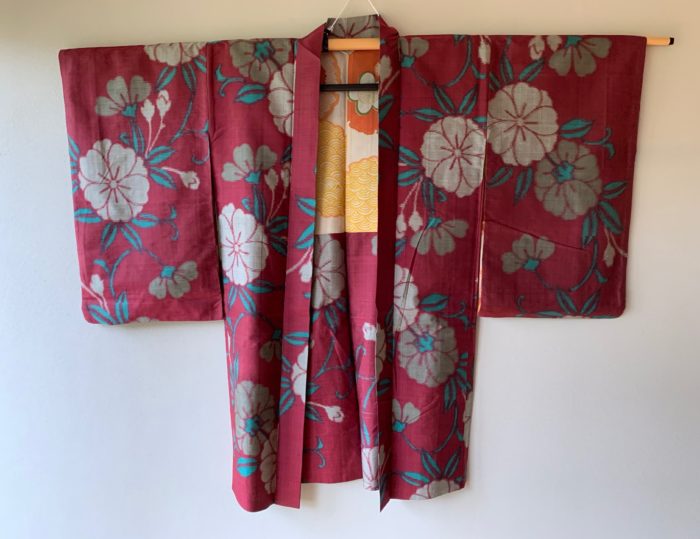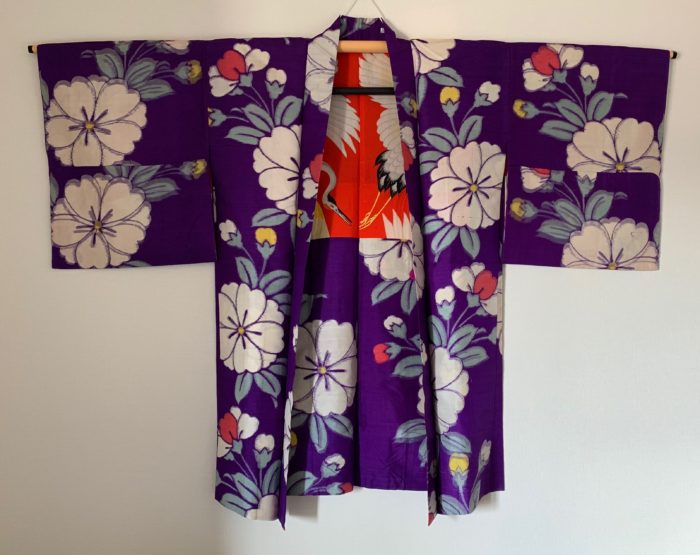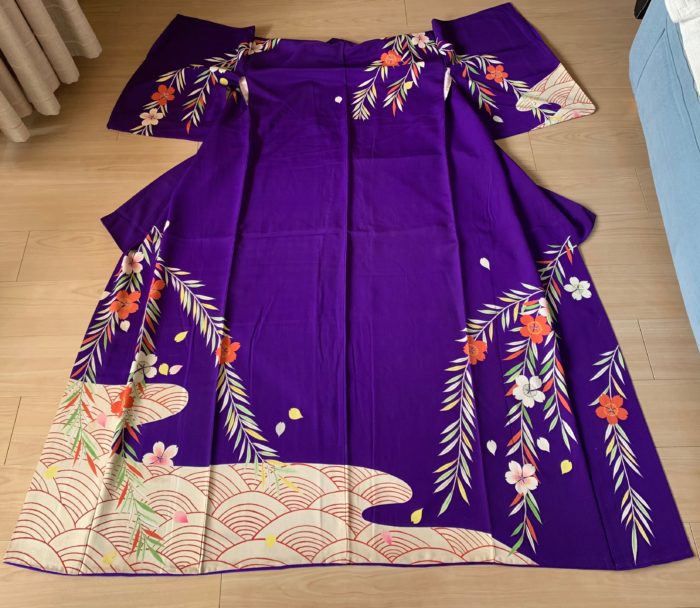April is the beginning of a new fiscal year for Japanese, the season for the entrance ceremony of schools and companies. For that reason, the cherry blossoms or sakura that bloom this month are special trees for many people. However, there are not many kimonos based on cherry blossoms compared to plum blossoms, which are loved in China and whose culture is imported to ancient Japan.
The antique komon kimono on the left above is unusual because of a pattern of Sakura alone, but the antique haori on the right above is with a combination of Sakura and Tachibana or mandarin orange. In the next two antique Meissen Haoris, the cherry blossoms are boldly large and deformed by influence of western design.
Sakura itself is gorgeous, but the Japanese seek delicate feelings there. Let’s look at a Japanese painting of a maiko and cherry blossom.
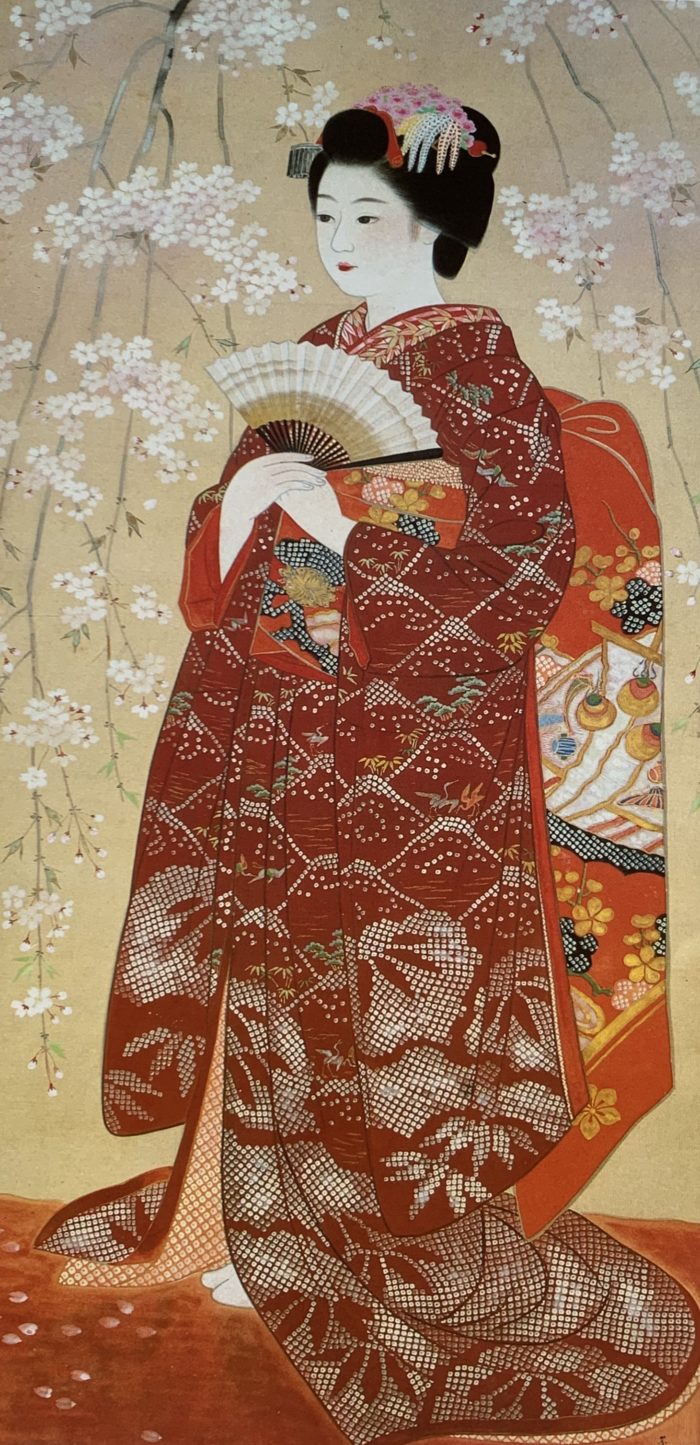
The painting above is with a cherry blossom in full bloom, but the tree species is a weeping cherry blossom or shidarezakura with its branches hanging down. In the next picture, the petals of the weeping cherry blossoms fall and the petals float in the pond where the Nishikigoi(Japanese colorful carp) swim. Draw a maiko looking at it, and there is a pale, ephemeral feeling.
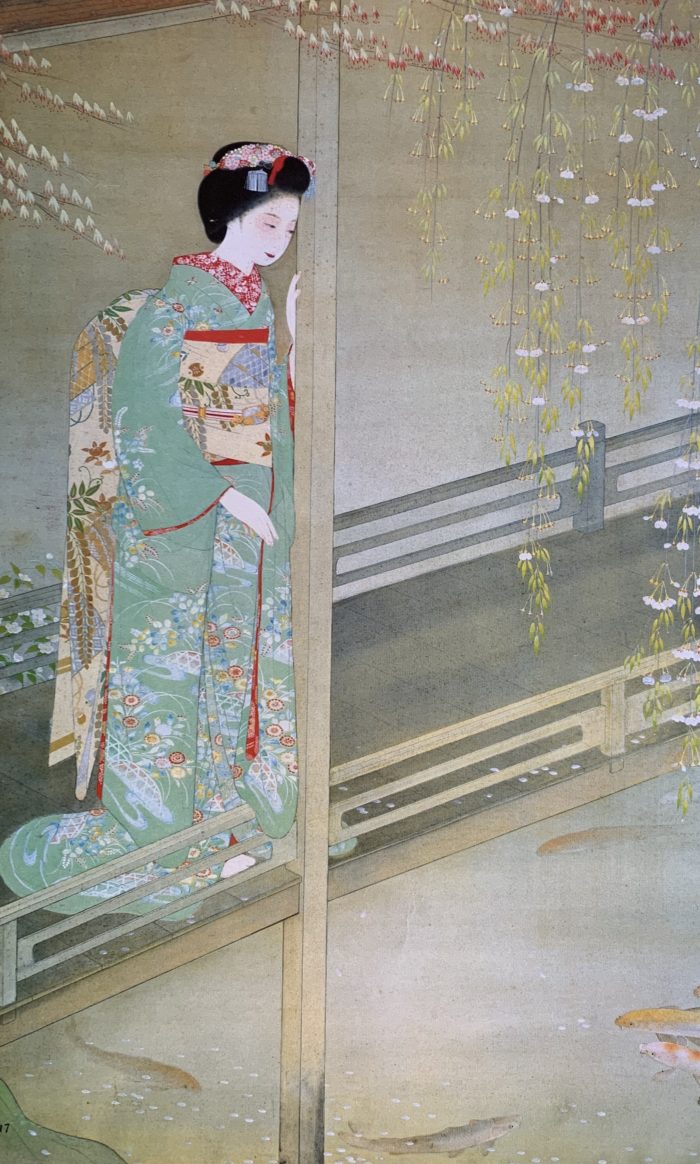
The main patterns on the left antique haori are willow-like leaves, and the antique kimono on the right is combined with a wave pattern to show the falling petals. Such aesthetic sense is expressed in the following Japanese painting. In this picture, a maiko, who serves at a banquet on a boat, reaches out to the falling petals of cherry blossoms. It is in full bloom in a flash, and scatters in a flash. In the moment of its short life, the Japanese feel beauty.


